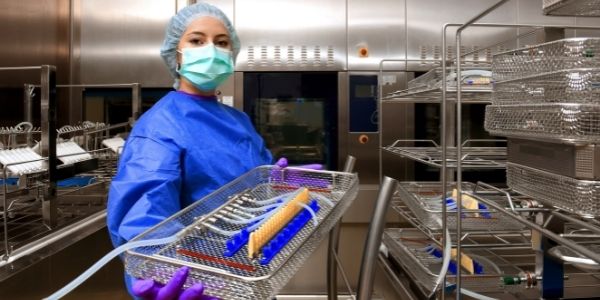Author: Sallie McLaughlin, Senior Microbiology Consultant
EN 17141:2020 Cleanrooms and associated controlled environments – Biocontamination control, introduced in August of 2020, is the new European standard that replaces EN ISO 14698-1:2003 and EN ISO 14698-2:2003.
This new standard covers best practices for controlling biocontamination within cleanrooms, controlled environments, clean zones, clean areas, and clean spaces. Additionally, information is included on the sources of microbiological contamination, what to include in the microbiological contamination control program, establishing alert and action levels, and information on sampling methods, equipment, and culture media.
If you distribute medical devices in Europe, overlooking this new standard may mean risking non-compliance. Whether you’re a new startup or an established manufacturer, complying with EN 17141:2020 will help to proactively identify risks, establish and implement a plan, and trend and monitor microbiological test results. An environmental monitoring program demonstrates the appropriateness of all control measures and supports validated sterilization processes.
Following the EN 17141:2020 standard means establishing a formal system for biocontamination control in your cleanroom. Abiding by this standard doesn’t just affect the microbiological aspect of your medical device, but is also tied to your medical device risk management strategy and QMS.
Complying with EN 17141:2020 ensures that the Quality Management System (QMS):
- Identifies all potential sources of contamination
- Assesses the risk from these sources
- Creates a schedule to monitor these sources via sampling
- Establishes alerts and action levels
- Continually verifies your system is intact and is meeting expectations
- Creates and maintains proper documentation
- Trains all staff members who work within the cleanroom
What actions should medical device manufacturers take to ensure compliance with EN 17141:2020?
If you comply with EN ISO 14968-1:2003 and EN ISO 14968-2:2003, conducting a gap analysis to the new standard is the first step. A gap analysis identifies the changes between the existing two standards that are now combined into EN ISO 17141:2020 to find any “gaps” between the current program and requirements of the new standard.
This process will help you determine which aspects of your QMS are in compliance, which areas are not in full compliance, and identify potential risks.
One method to establish microbiological control is understanding and identifying risks of contamination. This is achieved by determining:
- What are the potential sources of contamination?
- What is the likelihood of transfer?
- How does contamination affect the quality of the product?
- What is the consequence of contamination reaching the patient?
What devices are affected by this standard?
Medical devices currently manufactured in cleanrooms/controlled environments that claim compliance with the two previous standards are impacted by this new standard. While cleanrooms are used primarily for sterile medical devices, there are non-sterile products with cleanroom manufacturing operations that would also be impacted by the new standard.
What makes EN 17141:2020 different from EN ISO 14698-1:2003 and EN ISO 14698-2:2003?
One of the primary differences between the new standard and its predecessors is how risk is assessed. EN 17141:2020 offers more in-depth guidance to help manufacturers determine risk and design their programs accordingly. The documented risk assessment must provide a scientific rationale on the decisions to mitigate risks and residual risks. Also, a requirement for a regular review of the risk assessment is included in the new standard.
The informative section of the new standard includes guidance for pharmaceutical and medical device manufacturers and a flow chart to assist in the risk evaluation. For example, aseptic processing is considered high risk according to this new standard and includes more frequent monitoring than terminally sterilized medical devices.
There is a new requirement to qualify incubators, including continuously monitoring temperature throughout the incubation period and qualification at least once every three years. Another new requirement is the assessment of culture media to validate the conditions of use to ensure dehydration does not influence the growth-promoting properties.
It is important to have a knowledgeable team of internal or medical device consulting experts to assist with implementing the new standard, including a gap analysis. This will help you spot gaps between your current QMS and the new standard, identify risks, and determine any improvements required for the microbiological monitoring program for the cleanroom.
Lean Into Our Medical Device Cleanroom Expertise
Our medical device quality systems team will work with you to identify and manage cleanroom biocontamination risks and implement a plan to ensure an auditor doesn’t flag your processes.
Utilize QA Consulting’s medical device microbiology expertise to ensure your cleanroom monitoring program is in compliance with the latest industry standard.






